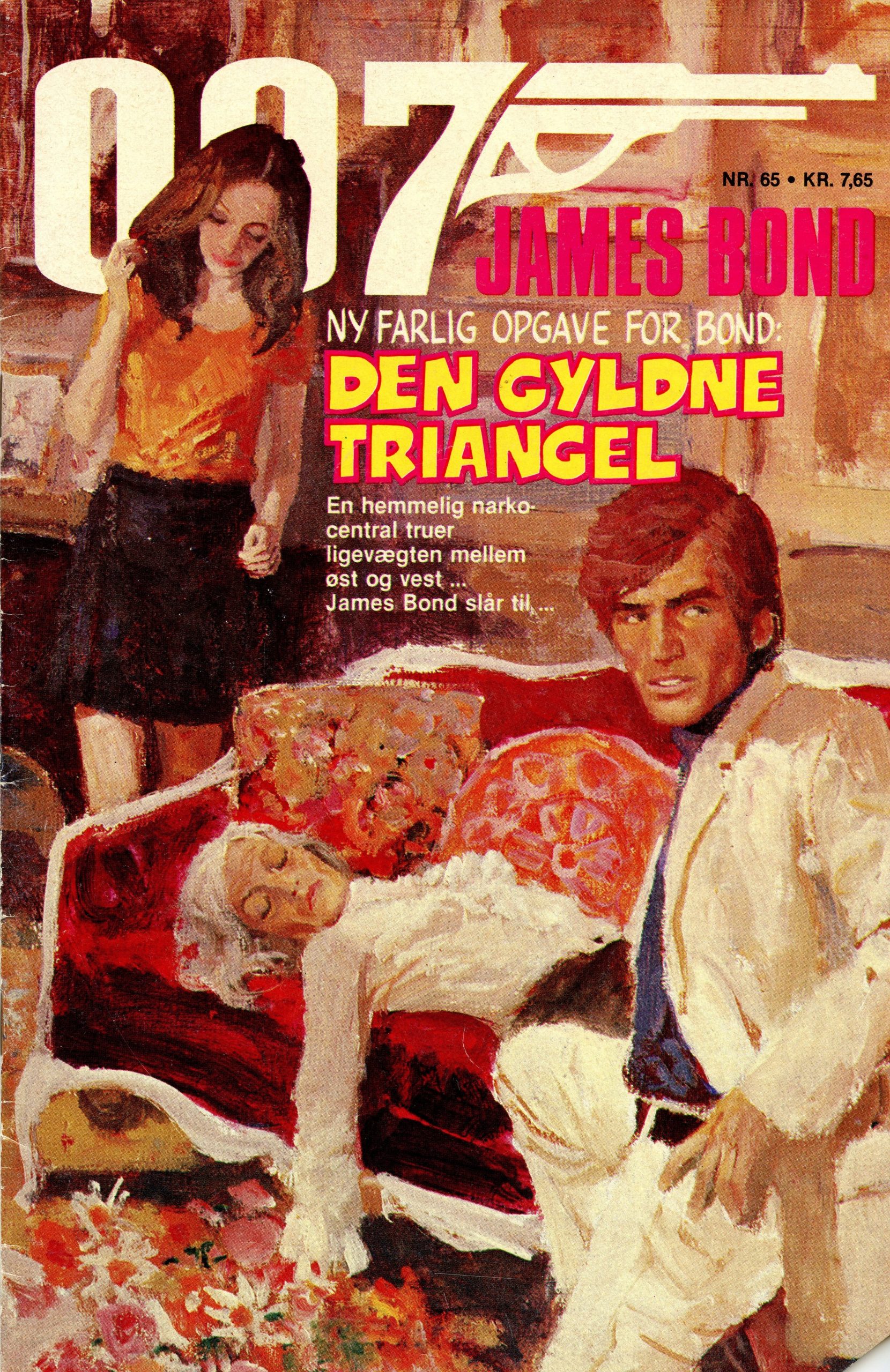COMIC BOOK
Original Swedish title: Den gyllene triangeln [The Golden Triangle]
Writers: "Johann Vlaanderen" = Terje Nordberg, Eirik Ildahl (uncredited)
Artist: Ramón Escolano Metaute (uncredited)
Publisher: A/S Interpresse
Editor: Carsten Søndergaard
Lettering: (uncredited)
Cover art: Colour illustration by uncredited artist
Format: 52 pages
Publishing date: November 17, 1982
Originally published in Sweden: James Bond 007 no. 1/1982
Danish reprint of: N/A
Content:
"Den gyldne triangel" (26-page comic)
Readers' letters: "BOX 007" (1½ page text)
"Musikken i James-Bond-filmene" [The Music in the James Bond films] (5-page feature written by Nicolas Barbano; to be continued i no. 66)
"Bond-våben" [Bond weapons] (5-page pictorial with captions by Nicolas Barbano)
"Krimi-quiz med Dick Danger" (1½-page non-Bond comic by Werner Wejp-Olsen)
Storsvindlerne: "Tømmermænd 40 år efter" (8-page non-Bond comic)
Note:
With this issue of James Bond 007, Danish publishing house Interpresse took a break from their reruns of old British newspaper strips. "The Golden Triangle" was the first in a series of new 26-page James Bond comics created especially for the Swedish, Norwegian, Danish and Finnish magazines by Interpresse's sister publisher in Sweden, Semic, under license from Glidrose Publications Ltd.
Semic outsourced the artwork to Spanish studio artists while the scripts were primarily written by English authors. However, the authors of the first story, "The Golden Triangle", were two Norwegians, Terje Nordberg and Eirik Ildahl, who appeared under the pseudonym Johann Vlaanderen ("Ian Fleming" in Flemish). Both writers were uncredited in the Danish magazine, as was the cartoonist, Ramón Escolano Metaute.
Only six months later, Interpresse discontinued the Danish "James Bond 007" magazine and restarted the publication series under a new title, "James Bond". The new format featured exclusively the new series by Semic, but closed after only seven issues. In both Norway and Sweden, the magazines continued to be published for many years, even after Semic ceased their production of new stories in 1991.


